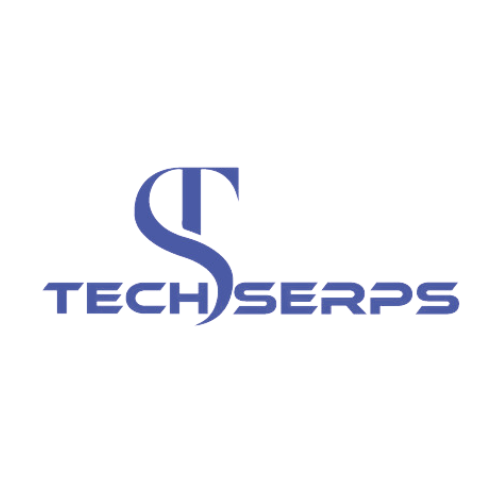Invisible Technologies is known for providing innovative solutions across various domains, including voice transcription, automation, and AI-driven tools. These technologies help businesses streamline workflows, improve efficiency, and reduce manual effort, making them popular among professionals and organizations seeking productivity-enhancing tools.
However, finding alternatives to Invisible Technologies can be essential for several reasons. You might seek more cost-effective options to fit a tight budget, advanced tools with enhanced capabilities, or solutions that better align with your specific business needs. Alternatives can also provide flexibility, scalability, or specialized features that improve overall performance.
Exploring substitutes ensures you stay informed about the best tools available, enabling you to make strategic decisions for your business. This guide focuses on efficient, budget-friendly, and cutting-edge alternatives to Invisible Technologies, offering you diverse options to match your goals while optimizing your resources and outcomes.

What Are Invisible Technologies?
Invisible technologies refer to tools, systems, or processes that operate seamlessly in the background, enhancing functionality without direct user interaction or visibility. These technologies integrate into everyday operations, automating tasks, improving efficiency, and enabling innovative solutions without being overtly noticeable.
Examples of Invisible Technologies:
- AI Algorithms: Used in search engines, recommendation systems, and fraud detection.
- IoT Sensors: Embedded in smart devices to gather and process data.
- Blockchain: Powers secure, transparent transactions in finance and logistics.
- Voice Assistants: Natural language processing systems that simplify user interactions.
- Automation Software: Streamlines repetitive tasks like email sorting or data entry.
Key Industries Using Invisible Technologies:
- Healthcare: AI for diagnostics, IoT for patient monitoring.
- Finance: Fraud detection systems, algorithmic trading.
- Retail: Personalized shopping experiences and inventory management.
- Transportation: Autonomous vehicles and smart traffic systems.
- Manufacturing: Robotics and predictive maintenance technologies.

Why Look for Alternatives?
While invisible technologies offer seamless integration and advanced capabilities, they are not without limitations. Depending on your needs, exploring alternatives might be a better option.
Limitations of Invisible Technologies:
- Cost Constraints: Many invisible technology solutions come with high implementation or subscription costs, making them less accessible for startups or small businesses.
- Limited Accessibility: Some tools may require specific infrastructure or technical expertise, restricting their usability for non-technical teams.
- Use-Case Specificity: Not all invisible technologies cater to niche requirements, leaving gaps in functionality for certain industries or tasks.
- Scalability Issues: Some solutions might struggle to adapt to growing demands or evolving business needs.
- Vendor Dependence: Relying on a single provider for critical operations can pose risks, such as service interruptions or lack of customization options.
Top Invisible Technologies Alternatives
Advanced Software Solutions
Software solutions are an excellent alternative to invisible technologies, offering robust features tailored to various needs. These tools enhance productivity, streamline operations, and often come with user-friendly interfaces.
Features and Benefits:
- Customization: Tailored to specific industries or tasks.
- Scalability: Adapts to business growth.
- Affordability: Flexible pricing models like pay-as-you-go or freemium plans.
Examples:
- Zapier: Automates workflows across apps and services.
- Grammarly: Provides AI-driven writing assistance in the background.
- Microsoft Power Automate: Integrates tools for advanced task automation.
Cutting-Edge Hardware Innovations
For tasks requiring physical interaction or data collection, hardware alternatives can replace or complement invisible technologies.
Explanation of Hardware Options:
- Devices such as smart sensors, edge computing systems, and wearables provide seamless functionality without the need for constant human intervention.
- Augmented Reality (AR) Headsets enhance training and operational workflows in industries like manufacturing and healthcare.
Compatibility and Ease of Use:
- Many hardware solutions integrate with existing systems, offering plug-and-play functionality.
- User-friendly designs ensure minimal training and smooth adoption.
Emerging Tech Trends
The latest trends in technology provide advanced substitutes that rival or enhance the capabilities of invisible technologies.
AI and Machine Learning:
- Enable predictive analytics, personalized recommendations, and intelligent automation.
- Examples: TensorFlow, PyTorch, and OpenAI API for customized AI applications.
Internet of Things (IoT):
- Ensures seamless integration between devices and systems, fostering efficient data collection and communication.
- Examples: Smart home hubs, industrial IoT systems, and wearable health trackers.

How to Choose the Right Alternative
Assessing Your Needs
Before selecting an alternative, it’s crucial to clearly define your requirements and goals.
- Understand Your Objectives: Identify the tasks or challenges the technology must address, such as improving efficiency, reducing costs, or enhancing user experience.
- Consider Scalability: Choose a solution that aligns with your current needs while accommodating future growth.
- Evaluate Integration Needs: Ensure the alternative works seamlessly with your existing systems and tools.
Comparing Costs and Benefits
Balancing your budget with the desired functionality is key to making an informed choice.
- Set a Budget: Determine how much you’re willing to invest in a solution, including upfront and ongoing costs.
- Analyze Features: Compare the must-have features against the “nice-to-have” ones.
- Calculate ROI: Estimate the potential return on investment by assessing how the alternative can improve productivity or reduce expenses.
Practical Tip: Use comparison tools or spreadsheets to evaluate multiple options side by side for a clearer picture.
Checking User Reviews and Case Studies
Third-party opinions provide valuable insights into the performance and reliability of alternatives.
- Importance of Reviews: Platforms like G2, Capterra, and Trustpilot host reviews that highlight real user experiences.
- Learn from Success Stories: Look for case studies or testimonials showcasing how other businesses have successfully implemented the alternative.
- Engage Communities: Join forums or online groups related to your industry for firsthand recommendations.
By following these steps, you can choose an alternative that not only meets your technical and financial needs but also aligns with your long-term business objectives.
Benefits of Using Alternatives to Invisible Technologies
Improved Efficiency
Alternatives often provide tailored solutions that address specific needs more effectively, streamlining processes and reducing redundancies. For example:
- Advanced software may integrate directly with your existing systems, minimizing downtime.
- Hardware innovations like IoT devices ensure faster data processing and actionable insights in real-time.
Cost Savings
Many alternatives are designed to offer budget-friendly options without compromising quality.
- Open-source software or subscription-based models often provide lower initial costs.
- Hardware with modular designs can reduce long-term maintenance and upgrade expenses.
- Emerging tech trends like AI tools often feature scalable pricing, making them accessible for businesses of all sizes.
Broader Customization Options
Alternatives can be more flexible, allowing you to adapt tools to your unique business requirements.
- Software solutions often offer API integrations, customizable workflows, and tailored features.
- Hardware devices may be configured to meet specific operational needs, such as custom IoT sensors for niche industries.
- Cutting-edge technologies like AI and ML enable personalized automation and data analysis.

Challenges You Might Face
Learning Curve with New Technologies
Adopting alternatives to invisible technologies often requires time and effort to learn the new tools.
- Training Needs: Employees may need additional training to understand and effectively use the new solutions.
- Initial Productivity Dip: The adjustment period may temporarily slow down workflows.
- Complexity of Features: Advanced alternatives with extensive features can overwhelm users if not implemented with proper guidance.
Solution: Opt for solutions with user-friendly interfaces and provide hands-on training or resources for your team.
Integration with Existing Systems
Ensuring smooth compatibility between the new technology and your current infrastructure can be a significant hurdle.
- Technical Barriers: Some alternatives may require system upgrades or specific configurations.
- Data Migration Issues: Transferring data from old systems to new ones might result in errors or loss.
- Downtime Risks: Integration processes can disrupt ongoing operations if not planned carefully.
Solution: Conduct compatibility checks and collaborate with IT professionals or the technology provider to ensure a seamless transition.
Despite these challenges, proactive planning and a gradual implementation approach can help you overcome obstacles and unlock the benefits of your chosen alternatives.
Conclusion
Invisible technologies offer innovative solutions, but exploring alternatives can provide tailored benefits, improved efficiency, and cost savings. By assessing your needs, comparing costs and features, and leveraging user reviews, you can identify tools that align with your business goals.
Key takeaways include the importance of understanding your requirements, evaluating options based on budget and functionality, and considering emerging trends like AI and IoT for seamless integration and advanced capabilities. While challenges like a learning curve or integration issues may arise, strategic planning and gradual implementation can help you transition smoothly.
Embrace the opportunity to discover the best alternatives to invisible technologies, ensuring they meet your unique needs and drive your business toward greater efficiency and success.
FAQs
What are Invisible Technologies?
Invisible technologies are systems or devices that operate seamlessly in the background without visible components, often enhancing user experience.
Why consider alternatives to invisible technologies?
Alternatives can address specific needs, offer cost-effective solutions, or provide unique features that suit your goals better.
How do I choose the best alternative?
Evaluate your requirements, compare costs and benefits, and look at user reviews or case studies.
Are there budget-friendly alternatives?
Yes, several software or hardware options offer affordable solutions without compromising on quality.
Can alternatives integrate with existing systems?
Most alternatives are designed with compatibility in mind, but checking specific requirements is essential.


